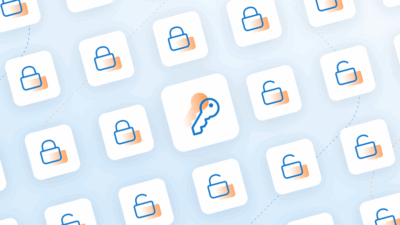In terms of landing the right customers, it all comes down to your SaaS company’s business model.
The sales model is what allows your company, business, or startup to grow and thrive. Choosing the wrong model for your product can severely delay growth, while choosing the right model can lead to impressive growth, revenue, and results.
Here’s a new concept based on a not-so-new model: landing enterprise clients with a self-service model. While self-service models are nothing new, the concept can lead to surprising results when used to target high-profile enterprise clients.
Who are Enterprise Customers?
Before we jump into landing high-profile enterprise clients, we must first understand who they are and what makes them such a favorable target.
The term “enterprise”, in this context, translates as “business.” So, selling to enterprise customers means you’re really selling your product or service to businesses. Why are you working to attract businesses? There’s a higher value to be found in business clients and customers. The more business customers you have, the easier it is to scale your own business.
What is a Self-Service Model?
The self-service sales model is one of the most popular models in SaaS today. This is largely due to the affordability and lack of complexity the model offers to both companies and customers.
As long as your prospective customers understand the value and benefits of your product, allowing them to explore, purchase, and service themselves can prove highly advantageous for your company, making it one of the most dynamic sales models around—if done right.
Even better, self-service models require little to no selling whatsoever, saving time, labor, and resources for growing startups in particular. The cost-saving effects of these models allow for revenue earned to be returned into the business for improvement instead of being shelled into sales and labor.
And, as a bonus, self-service models can lead customers to the more lucrative enterprise software. A study by OpenView Labs found that 15% of one company’s annual revenue was effectively from customers who started out using the self-service model, but exhausted the functionality and upgraded to the enterprise model. The self-service model acted as the gateway into the higher-priced software, without additional effort from the sales team.
Is a Self-Service Model Right For You?
The more traditional field sales model has three strikes against it.
- Expensive: A survey by the website “For Entrepreneurs” found that field sales companies spend as much as $0.96 per dollar of all-commodity volume (ACV) they get from new customers, but SaaS companies with an online distribution component spend just over half of that. Self-service isn’t just more attractive to enterprise clients, but it’s more fiscally responsible.
- Restrictive: Focusing your efforts on field sales attracts a limited number of customers— primarily those who are familiar with the product landscape. You’re missing out on the new start-ups who desperately need your help.
- Slow: Sending out a field sales team to make contact with potential enterprise customers is time-consuming. It’s harder now than ever to contact leads— technology makes it easy for them to dodge calls, avoid emails, and ignore messages. It takes time to convince prospects that they should even talk to your sales team, let alone sign on to become a customer.
Conversely, self-service models are far less expensive to sell. They’re easier to sell, too— particularly to companies that are unwilling or unable to commit to an expensive software package. 75% of pre-sales activity for most companies is conducted online, without sales assistance. In other words, some customers don’t necessarily want to interact with your sales team until they’re actually ready to make a purchase.
Companies want to see a frictionless proof of concept prior to a roll out. To solely rely upon a sales team is expensive and time-consuming, for you and the customer.
An effective self-service model should be easy for any customer to execute, regardless of their knowledge base, and it must have a great deal of excellent information related to the software that’s accessible to your customers should questions arise.
How to Land High-Profile Customers With a Self-Service Model
Self-service models and enterprise customers are surprisingly compatible. There are several benefits to both parties, including growth for your company.
As we all know, businesses want to save time and streamline their processes as much as possible. When business clients are able to purchase and use your service when they want and how they want, your service is far more appealing. Allowing them to adhere to their own timeline rather than yours is not just good customer service but an enticing feature that will attract other businesses to purchase your product.
To be successful in this endeavor, it’s best to ensure you’ve built tremendous value into your product. This can be done via previous marketing efforts, by filling your products’ site with high-value comprehensive content, ensuring your product is well designed and meets professional standards, and/or by offering a strong demo or trial. Together, these efforts will give prospects everything they need to be driven toward a sale to improve their business and, in turn, yours.
Explain to your prospects why your product is valuable to them, show them the available options, and then step back and let them see for themselves what your product can do for them. Once they’ve tried it out and proved its functionality, they’ll be far more willing to upgrade and expand the value of the product.
Plus, the easier and more beneficial it is for these high-profile customers to purchase your product, the quicker you’re able to save money and resources while growing your business—also known as scaling.
![[Customer Story] Why TestDome Considers FastSpring a Real Partner](https://fastspring.com/wp-content/themes/fastspring-bamboo/images/promotional/2023/FastSpring-TestDome-blog-thumbnail.jpg)








